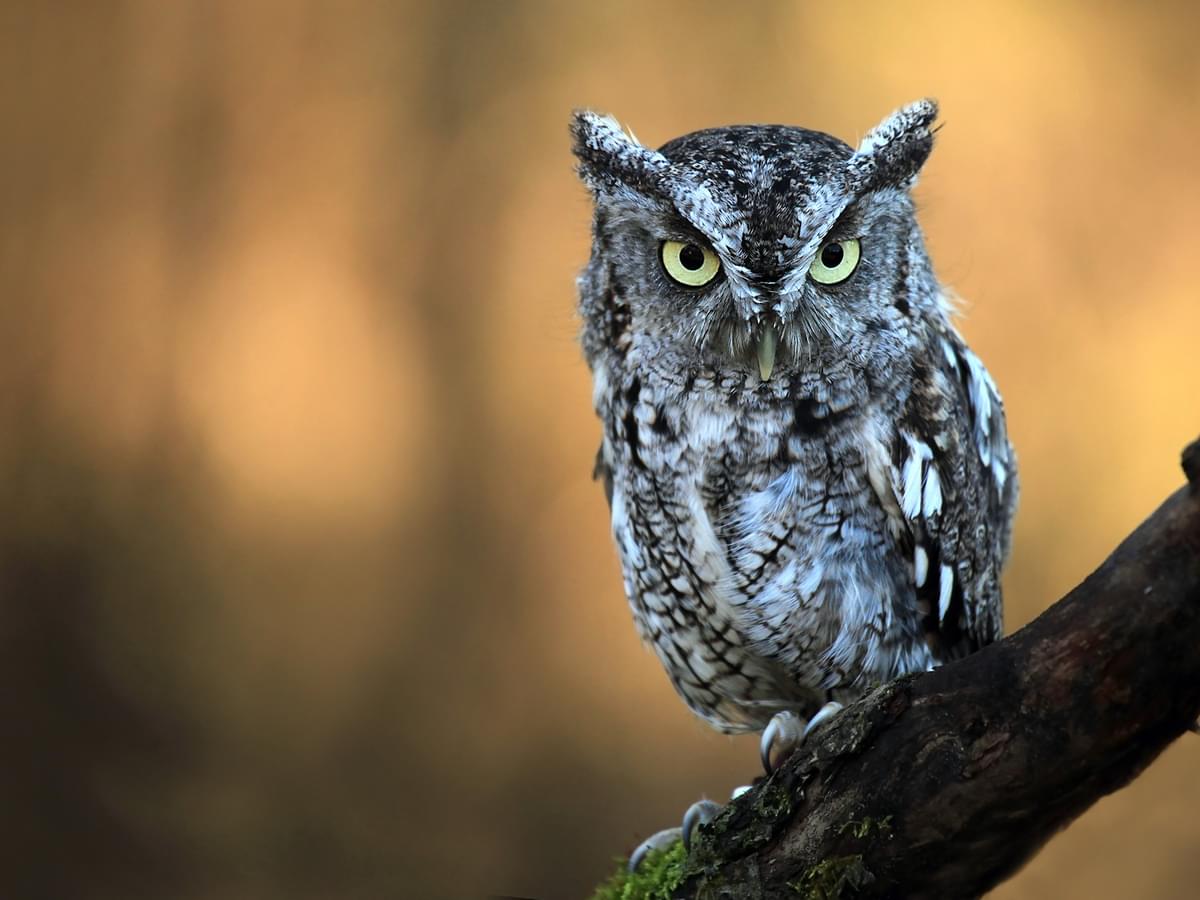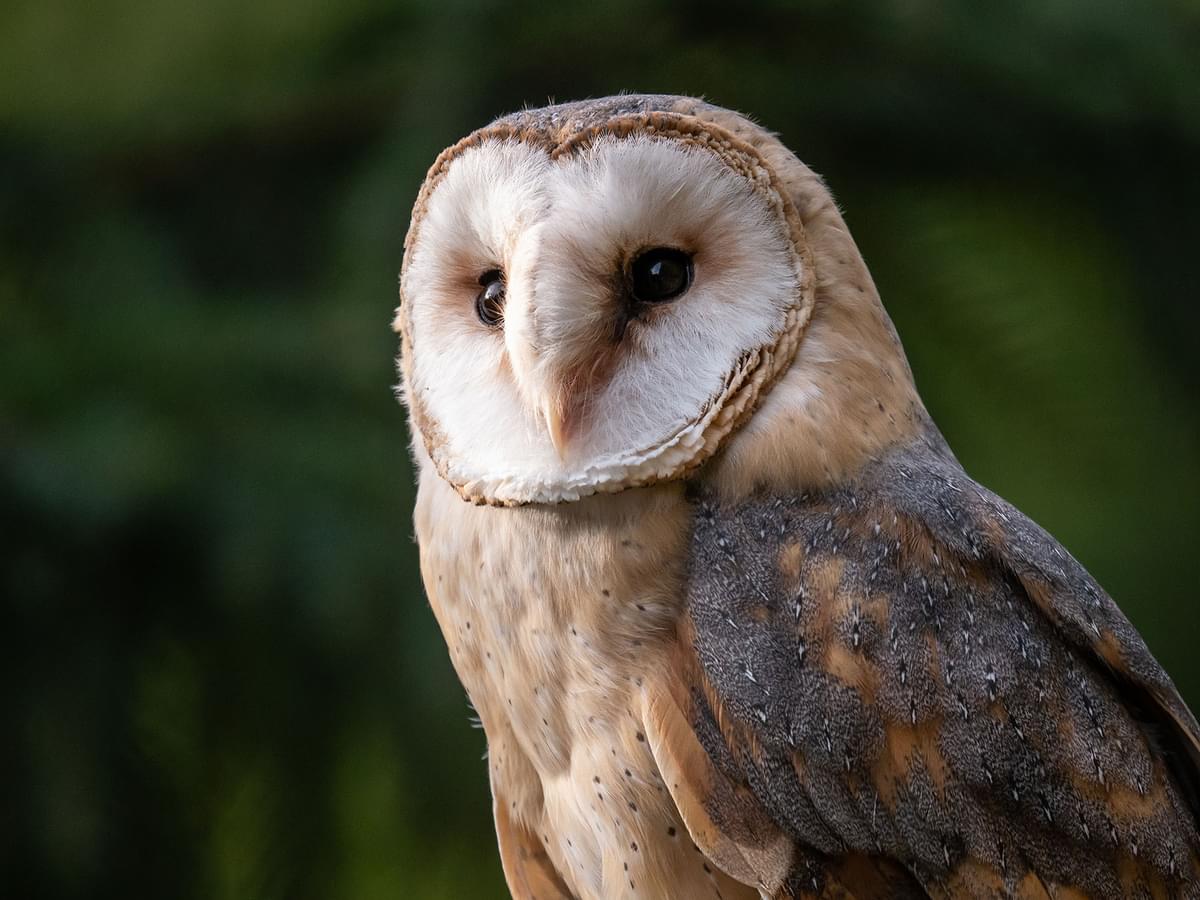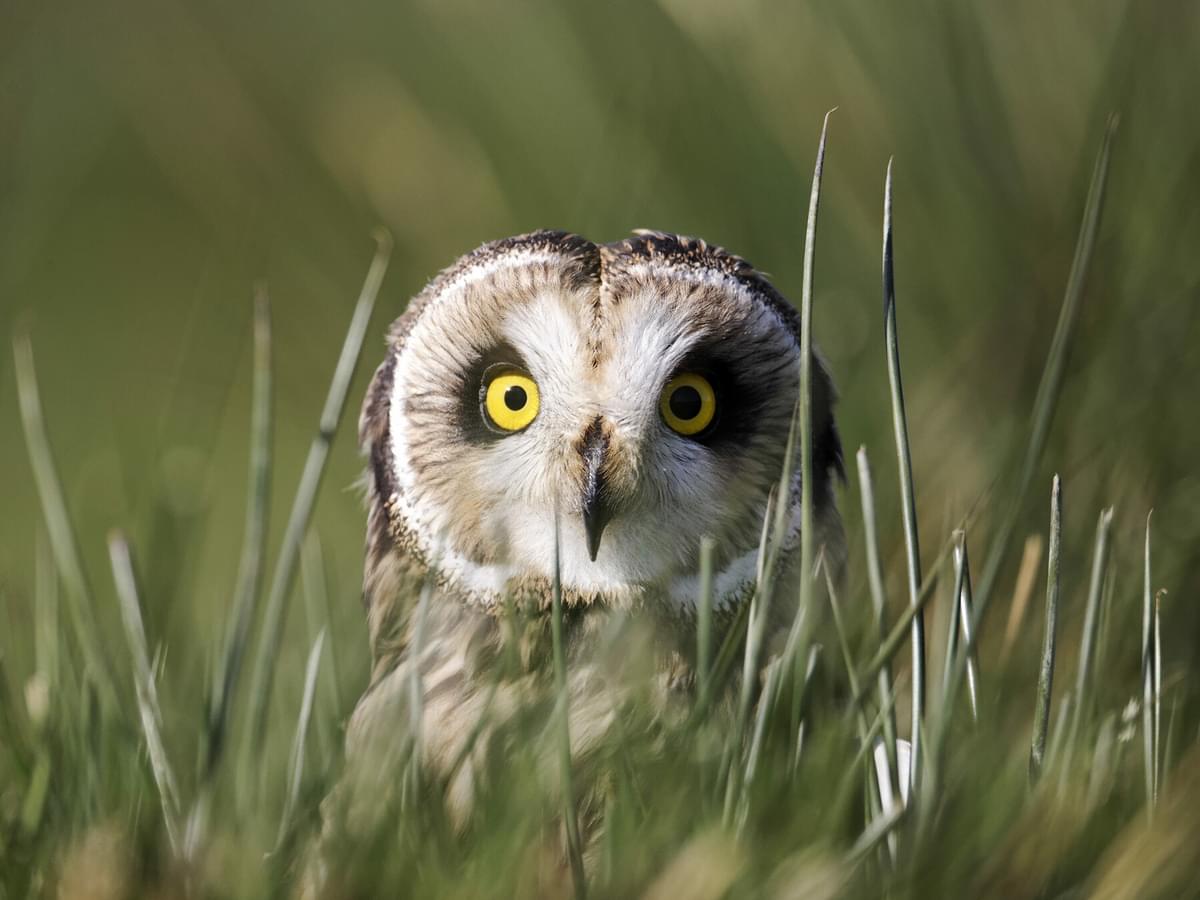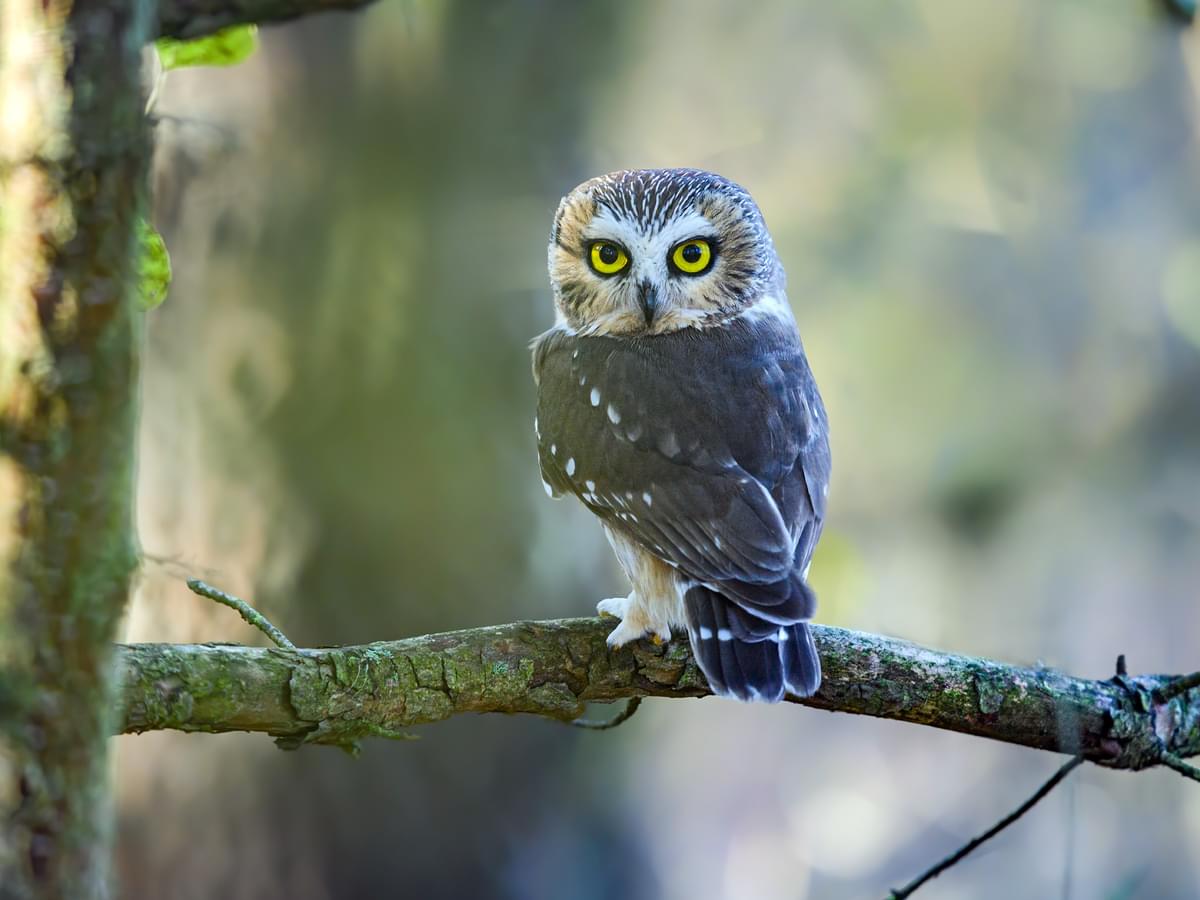Arkansas hosts a remarkable variety of owls throughout the year, from common residents to rare seasonal visitors.
Each brings its own hunting style and personality to our state's diverse habitats, from the Ozark highlands to the lowland forests of the Delta.
Barred Owl
Strix varia

Length
43-50cm
Wingspan
99-110cm
Weight
470-1050g
Regional Rarity Score
Ranges from 0 (common) to 100 (extremely rare) in this region
Barred Owls dominate the state's wooded areas year-round, showing a particular fondness for the bottomland hardwood forests of eastern Arkansas.
They're especially numerous in the swampy areas around the White and St. Francis Rivers, where mature trees provide perfect nesting cavities.
Watch for them swiveling their heads to track movement, sometimes turning almost completely backwards before snapping forward again.
During spring evenings, pairs perform elaborate duets that sound almost like raucous monkeys in the forest, a sound that echoes particularly well through the dense river bottoms.
Great Horned Owl
Bubo virginianus

Length
46-63cm
Wingspan
91-153cm
Weight
910-2500g
Regional Rarity Score
Ranges from 0 (common) to 100 (extremely rare) in this region
The Great Horned Owl stakes out territories across every corner of Arkansas, from urban parks to remote wilderness.
These powerful hunters are just as comfortable in the pine forests of the Ouachita Mountains as they are in the scattered woodlots of the Arkansas River Valley.
They're notorious for raiding suburban areas around cities like Little Rock and Fayetteville, where the deep, resonant "hoo-h'HOO-hoo-hoo" gives away their presence.
Watch for them near field edges, where they dive on unsuspecting rabbits and other prey.
Eastern Screech-owl
Megascops asio

Length
16-25cm
Wingspan
46-61cm
Weight
121-244g
Regional Rarity Score
Ranges from 0 (common) to 100 (extremely rare) in this region
Eastern Screech-Owls are versatile residents that thrive across Arkansas's varied landscapes. These small but adaptable owls reach peak activity in September when their distinctive trembling whistle becomes a familiar sound in both suburban neighborhoods and wild woodlands.
Despite their name, they rarely screech - instead producing a soft, descending whinny or a steady series of hollow toots.
Look for them in woodland edges and urban parks where old trees provide cavities for nesting. Their excellent camouflage and small size make them easy to miss, but careful scanning of tree cavities at dusk might reveal their distinctive silhouette.
Barn Owl
Tyto alba

Length
33-39cm
Wingspan
80-95cm
Weight
430-620g
Regional Rarity Score
Ranges from 0 (common) to 100 (extremely rare) in this region
American Barn Owls bring their ghostly presence to Arkansas primarily in winter months, favoring the open agricultural lands of the Mississippi Delta and Grand Prairie regions.
These heart-faced owls thrive where grain storage and old farm buildings provide both hunting grounds and roosting sites.
Look for their distinctive white undersides flashing in car headlights as they glide silently along roadside margins after dark, particularly in areas where rice fields and pastures dominate the landscape.
Short-eared Owl
Asio flammeus

Length
34-43cm
Wingspan
85-110cm
Weight
206-475g
Regional Rarity Score
Ranges from 0 (common) to 100 (extremely rare) in this region
Short-eared Owls arrive with winter's chill, concentrating in the state's prairie remnants and extensive agricultural areas. The Stuttgart region, with its mix of rice fields and open country, often hosts good numbers during winter months.
Watch for their distinctive moth-like flight as they quarter low over open fields and prairies, wings held in a shallow V-shape. They're particularly fond of areas where prescribed burns or grazing has kept vegetation short.
Northern Saw-whet Owl
Aegolius acadicus

Length
17-21cm
Wingspan
42-56cm
Weight
65-125g
Regional Rarity Score
Ranges from 0 (common) to 100 (extremely rare) in this region
The Northern Saw-whet Owl makes rare but regular appearances in November, mainly in the higher elevations of the Ozark and Ouachita Mountains.
Mount Magazine and Mount Nebo State Parks occasionally host these secretive visitors during their brief migration through Arkansas.
During their brief stay, they might be heard making a steady series of tooting calls in upland forests, particularly in areas where dense stands of cedar or pine provide daytime shelter.
Finding Arkansas Owls
Each of these owls has carved out its own niche in Arkansas's ecosystem, from the river bottoms to the mountain tops.
While some species stick to specific habitats, others adapt to wherever they can find good hunting and shelter.
Their presence adds to the wild symphony of Arkansas nights, though you might need patience and sharp eyes to spot these masters of camouflage.
Common Questions About Arkansas Owls
Are owls protected in Arkansas?
All owl species in Arkansas are protected under federal law through the Migratory Bird Treaty Act. This makes it illegal to harm, harass, or possess any owl, their feathers, eggs, or nests without proper permits.
The protection helps maintain healthy populations of these important predators in Arkansas's ecosystems.
What is the most common owl in Arkansas?
The Barred Owl is Arkansas's most frequently encountered owl species, with nearly 1,000 documented sightings annually. They're followed by Great Horned Owls, which have about 630 yearly observations and then the Eastern Screech-owl.
Both are year-round residents, but Barred Owls are particularly numerous in the state's extensive bottomland forests.
What time of year can you see owls in Arkansas?
The best time to see owls in Arkansas varies by species:
- Year-round residents: Barred Owls (peak activity in April), Great Horned Owls (peak in August) and Eastern Screech-owls (peak in September)
- Winter visitors: Barn Owls and Short-eared Owls (November through February)
- Fall migration: Northern Saw-whet Owls (primarily November)
